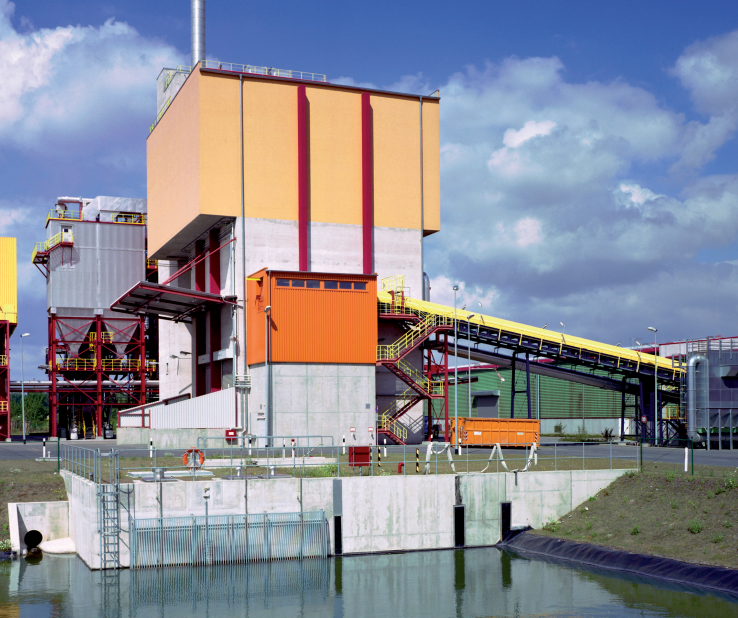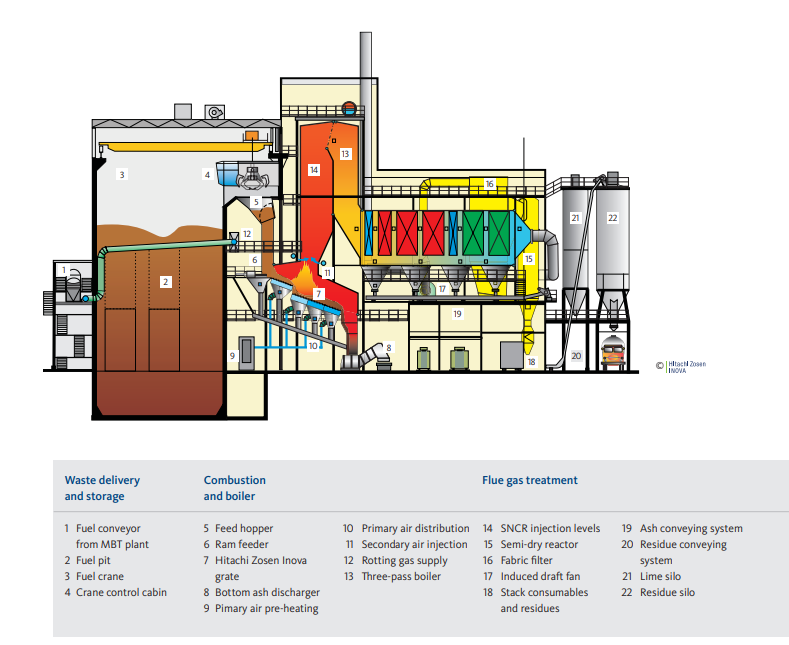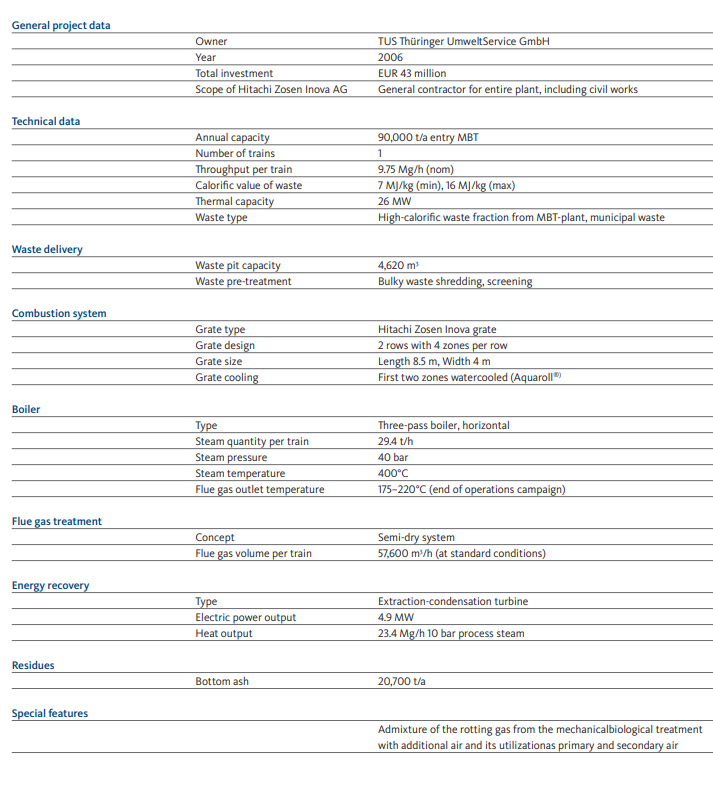Erfurt / Germany
Erfurt / Germany
Waste treatment at Erfurt: synergy from biology and energy.

With the completion of the residual waste treatment plant at Erfurt, TUS Thüringer UmweltService GmbH has broken new ground in Europe. Commissioned in 2006, the plant combines mechanical-biological treatment with directly connected Waste to Energy conversion of the high calorific waste fractions.
Integrated in the premises of an existing power plant in the eastern part of the city, the Waste to Energy plant treats the municipal solid waste from about 350,000 residents of the German federal state of Thuringia. Hitachi Zosen Inova was as general contractor responsible for the underlying design, engineering, implementation, and construction of the Waste to Energy section. Thanks to the combination of processes, the operators can respond flexible to changing waste compositions of the incoming waste by dividing the material streams into separate fractions for biological or thermal treatment. In tandem with the adjacent power plant, all energy management tasks can thus be reliably fulfilled at any time. Fuel for the Waste to Energy plant is provided by the high calorific fraction of the Mechanical Biological Treatment plant (MBT) which is separated from the delivered waste after shredding and screening. The remaining amount of waste (about 25%) undergoes biological treatment in intensive rotting and postrotting stages before being released for disposal.
Waste to Energy with optimal process linkage
The concept of the Waste to Energy plant is based on the Hitachi Zosen Inova compact plant which consists of a single process train including grate combustion system, boiler and thermal system, energy recovery, and flue gas treatment.
Special fuel requires special treatment
A conveyor belt carries the fuel from the MBT plant directly to interchangeable chutes from where it is dropped into a specifically for this plant designed bunker pit. The Hitachi Zosen Inova grate comprises four zones – two of them water-cooled – and ensures complete burnout of the high calorific fuels. In the overhead three-pass boiler, thermal energy is extracted and then released as cogenerated electrical power and steam to the adjacent gas and steam power plant.
Admixture of rotting gas saves energy and increases ecological soundness
A special feature, implemented at Erfurt for the first time, is the admixture of the heavily contaminated rotting gas from the mechanical-biological treatment with additional air and its utilization as primary and secondary air. This makes it possible to comply with the legal exhaust emission limits without resorting to energy-intensive regenerative thermal oxidation (RTO). Moreover, the admixtureof the rotting gas reduces exhaust emissions to the lower level of the Waste to Energy plant.
Advanced flue gas treatment, safe and proven
The two-stage flue gas treatment ensures that the legal emission limits are safely met at all times. While nitric oxides are destroyed in the SNCR (selective non-catalytic reduction) process, the subsequent semi-dry flue gas treatment ensures that particles, gaseous pollutants, as well as heavy metals and dioxins are safely separated. The residues consist of bottom ash for subsquent utilizazion as well as residues flue gas for offsite disposal.



